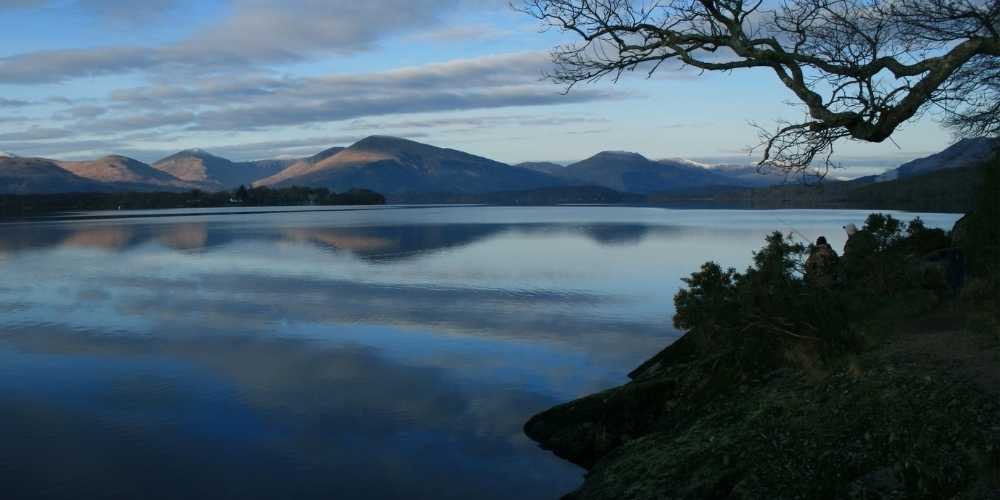
Loch Lomond & The Trossachs National Park
Visit Loch Lomond & Trossachs National Park
If you’re lucky enough to visit the Highlands of Scotland, Loch Lomond and the Trossachs National Park will likely be your first introduction to the majestic beauty of the north of Scotland.
At 720 square miles (1865 sqkm) Loch Lomond & Trossachs National Park is massive and there are endless things to see and do. Full of waterfalls, deep Scottish glens, rugged Highland mountains, many freshwater islands and Viking history, Loch Lomond & Trossachs National Park truly is a special place in Scotland
Loch Lomond may be the most beautiful Loch in the whole of Scotland, sure Loch Ness gets all the attention, as it’s got it’s own monster, but Loch Lomond has islands, mountains and glens in abundance. On Loch Lomond there are over 30 Islands, some big enough to have a farm on, some so small you may struggle to even get a tent on it.
Even though there are more than 30 islands on Loch Lomond, some ancient settlers must have though “You know what? We need more Islands!”. They were so keen for more land on the Loch, they built Crannogs, these are man made islands, made of a ring of tree trunks, hammered into the Loch bed, infilled with rock and other materials, then they built settlements and buildings on them. Absolutely mind blowing!
Wildlife of Loch Lomond & Trossachs
If you enjoy wildlife, then Loch Lomond really does have it all.
The National Park has a huge variety of wildlife and conservation projects to enhance their habitat and numbers.
Loch Lomond and the Trossachs has every species of Deer to be found in Scotland - Red Deer, Fallow Deer, Sika Deer and the smallest species, Roe. Fallow Deer are so numerous in some areas of Loch Lomond, that you can even find them over most of the Loch’s Islands and if you’re in the right place at the right time, you may even see them swimming between the Islands.
If you like variety, then Loch Lomond and the Trossachs also has Golden Eagles and the White Tailed Sea Eagle which nested on Loch Lomond for the first time in 2021. There’s Ospreys, that make the trip from Africa every year to lay their eggs and raise their chicks before flying back south. There’s Red Squirrels, which thanks to the work put in by Loch Lomond and the Trossachs National Park, are making a glorious come back, and their numbers are increasing every day after years of declining numbers due to the introduction of American Grey Squirrels.
For the more exotic, we’ve even reintroduced Beaver within the boundaries of Loch Lomond and the Trossachs plus… And you may find this hard to believe, you may even stumble upon Wallabies while in a certain part of the National Park.
Waterfalls of Loch Lomond
With all the beautiful lochs, deep glens and ancient mountains, it’s the perfect setting for cascading, rapturous waterfalls.
It seems that no matter where you tour and explore in Loch Lomond and the Trossachs, you’re going to come across a magnificent torrent of fast flowing waterfalls.
Some of the most beautiful can be hiked to and visited. We even visit some on our Loch Lomond and Trossachs National Park Tours that leave daily from Balloch and Glasgow.
Some we like to enjoy are Bracklinn Falls in Callander. There’s also a nice woodland walk into the falls that’s perfect for birdwatching.
Another we love to visit is the cascading Falls of Dochart, these are in Killin and flow under a bridge that’s technically older than the USA, being built in 1760.
Another fantastic set of waterfalls to explore within Loch Lomond and the Trossachs National Park is the Grey Mare’s Tails Waterfalls at Ben Glas, which is just above a section of the West Highland Way Hike in the northern section of Loch Lomond and the Trossachs National Park.
10 Fun Facts of Loch Lomond & Trossachs National Park
Loch Lomond is the largest lake by surface size in Great Britain.
Loch Lomond holds the second largest quantity of water behind Loch Ness.
The famous Scottish song, The Bonnie Banks of Loch Lomond, was written about this beautiful Loch.
The Highlands and Lowlands crashed together millions of years ago, making the Highland fault, which runs through the National Park.
Loch Lomond also has a monster which resembles a large crocodile.
Loch Lomond is so deep at 620 feet that you could fit 2 Big Bens on top of each other with room to spare.
There are ancient Standing Stones within Loch Lomond & The Trossachs dating to about 3000-5000 years old.
There’s an Island on Loch Lomond names Inchlonaig, that King Robert the Bruce had planted with Yew trees on, in an aim to have enough wood to make bows and arrows to defeat the English with.
There were Beaver illegally introduced into the norther sections of Loch Lomond and the Trossachs National Park in the early 2000’s.
There’s believed to be a sword belonging to King Robert the Bruce (Netflix’s Outlaw King) in a small Lochan in the northern section of Loch Lomond and the Trossachs that he threw in there after being ambushed and defeated in the Battle of Dalrigh.





